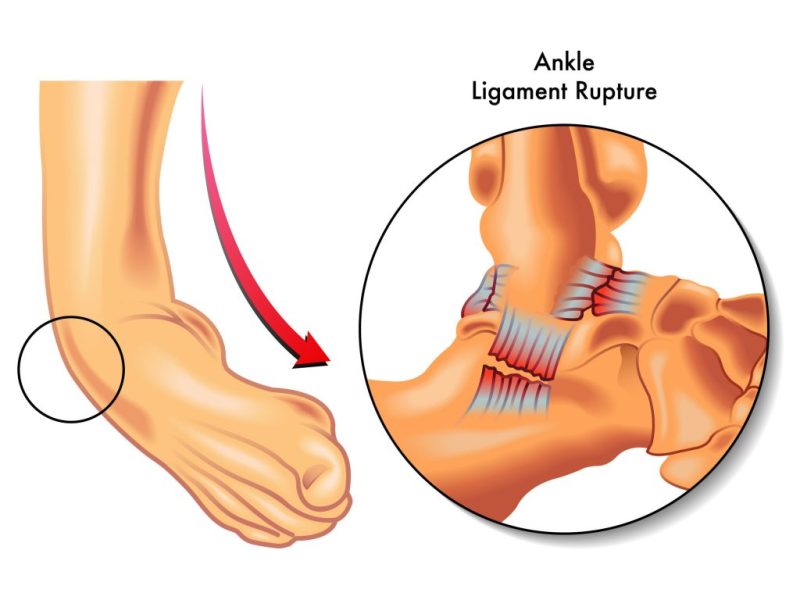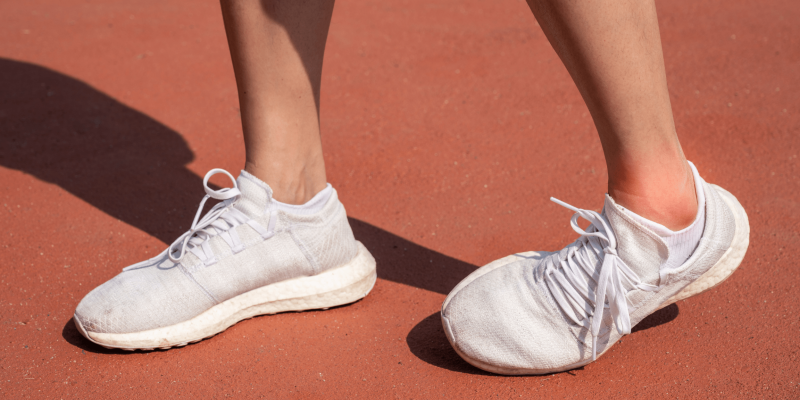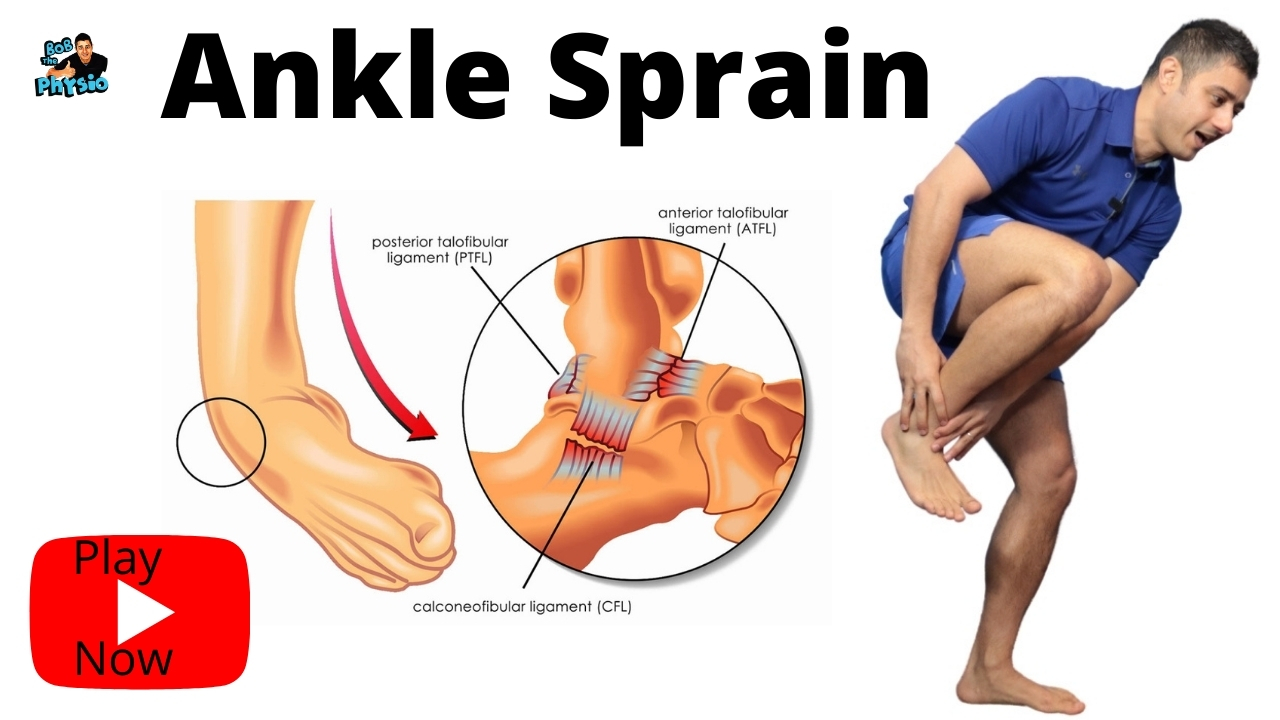Ankle Injury sprains are one of the most common injuries in sports such as (Basketball. Soccer, and Volleyball). It is one of the most prevalent injuries of the musculoskeletal system. About 50% of these injuries are sports-related. The research highlighted, if it is not treated properly, the chances of injury recurrent would be up to 30% to 40% of the patients.

We are going to show you with a couple of steps on how to protect your ankle from an acute injury. The first aid method of treating musculoskeletal injuries has been taught through the pneumonic, R.I.C.E, (Rest, Ice, Compress, Elevate.) and P.R.I.CE (Protection,Rest,Ice,Compress,Elevate). However, we are going to show you POLICE protocol. The POLICE Principle is a modern/modified first aid method of treating musculoskeletal injuries.
These steps are known as POLICE protocol as we could divide them to Protection, Optimal Loading, Rest, Ice, Compression, and Elevation. This procedure should be applied within the first 24 to 72 hours immediately after an ankle injury.
The main goal of this time frame is to control the amount of swelling to the injured area, prevent further injury, and reduce pain. This principle will help you to reduce the amount of swelling, thereby it will fasten the recovery and rehabilitation program. Read more about the healing stages of soft tissue.
Protection
Protection is meant to prevent further injury. For example, an injured leg or foot may be protected by limiting or avoiding weight-bearing through the use of crutches, a cane, or hiking poles. Partially immobilizing the injured area by using a sling, splint, or brace may also be a means of protection.
Optimal Loading
Optimal loading will stimulate the healing process as bone, tendon, ligament, and muscle all require some loading to stimulate healing. Optimal loading is done by utilizing mechano-therapy intervention and includes a wide range of manual techniques currently available “Paradoxically, crutches, braces, and supports, traditionally associated with rest, may have a greater role in adjusting and regulating optimal loading in the early stages of rehabilitation.
The right amount of activity can help manage the swelling. For example in the ankle, contraction of the calf muscles helps to move swelling up the body against gravity. Complete rest would prevent this. In some instances, loading may not be necessary i.e. in severe fractures that need surgery.
Rest
Rest is important to allow for healing. However, many sports medicine specialists use the term “relative rest” meaning rest that allows for healing but is not so restrictive that recovery is compromised or slowed. A person should avoid activities that stress the injured area to the point of pain or that may slow or prevent healing. Some movement, however, is beneficial. Gentle, pain-free, range-of-motion and basic isometric contractions of the joints and muscles surrounding an injury have been shown to speed recovery.
Ice
Ice refers to the use of cold treatments, also known as cryotherapy, to treat acute injuries. Ice is recommended with the intent to minimize and reduce swelling as well as to decrease pain. There are many ways to employ cryotherapy at home. The most common and most convenient is a simple plastic bag of crushed ice placed over a paper towel on the affected area. It is important to protect the skin and limit the cold exposure to 10 to 15 minutes. Cycles of 10 to 15 minutes on and 1 to 2 hours off are generally agreed upon as effective and safer than longer periods of continuous ice application.
Compression
Compression is the use of a compression wrap, such as an elastic bandage, to apply an external force to the injured tissue. This compression minimizes swelling and provides mild support. How to move to the 2nd phase of ankle rehabilitation? Ankle Sprain Treatment – Rehabilitation (Phase 2).
Elevation
The elevation is recommended to help reduce the pooling of fluid in the injured extremity or joint. Controlling swelling can help decrease pain and may limit the loss of range of motion, possibly speeding up recovery time.
Our Approach
Dublin Sports Injury Clinic is a physical therapy clinic based in Fitzwilliam Square, Dublin2. We have a holistic approach to our assessment and treatment. The initial assessment helps us to explore the cause of your injury and help you to get pain free shortly and stop any further injuries. We will design a customized training program for you to start with, and we will coach you and monitor your progress closely. We will prescribe relative rest or modified activities as required. Depending on the individual requirement, we apply manual therapy accompanied by stretching to restore tissue elasticity and reduce the strain in the muscle-tendon unit with joint motion.
FOLLOW US ON YOUTUBE AND GET ACCESS TO OUR WEEKLY FREE REHABILITATION EXERCISES.
Next step
Want to get in touch with our team of the therapist or you are looking for some advice? Simply fill in your details below & we get in touch with you shortly.
Disclaimer: This article is for information only and should not be used for the diagnosis or treatment of medical conditions. You can contact us if you would like to book an appointment or get some advice from our therapist.



3 Responses
I am a cryotherapy believer. This is very informative.
Thanks for your comment, Katheleen. I’m happy that you find the article helpful 🙂
Have you ever thought about creating an ebook or guest authoring on other websites?
I have a blog based upon on the same topics you discuss and would really like to have you share some stories/information. I know my subscribers would
enjoy your work.